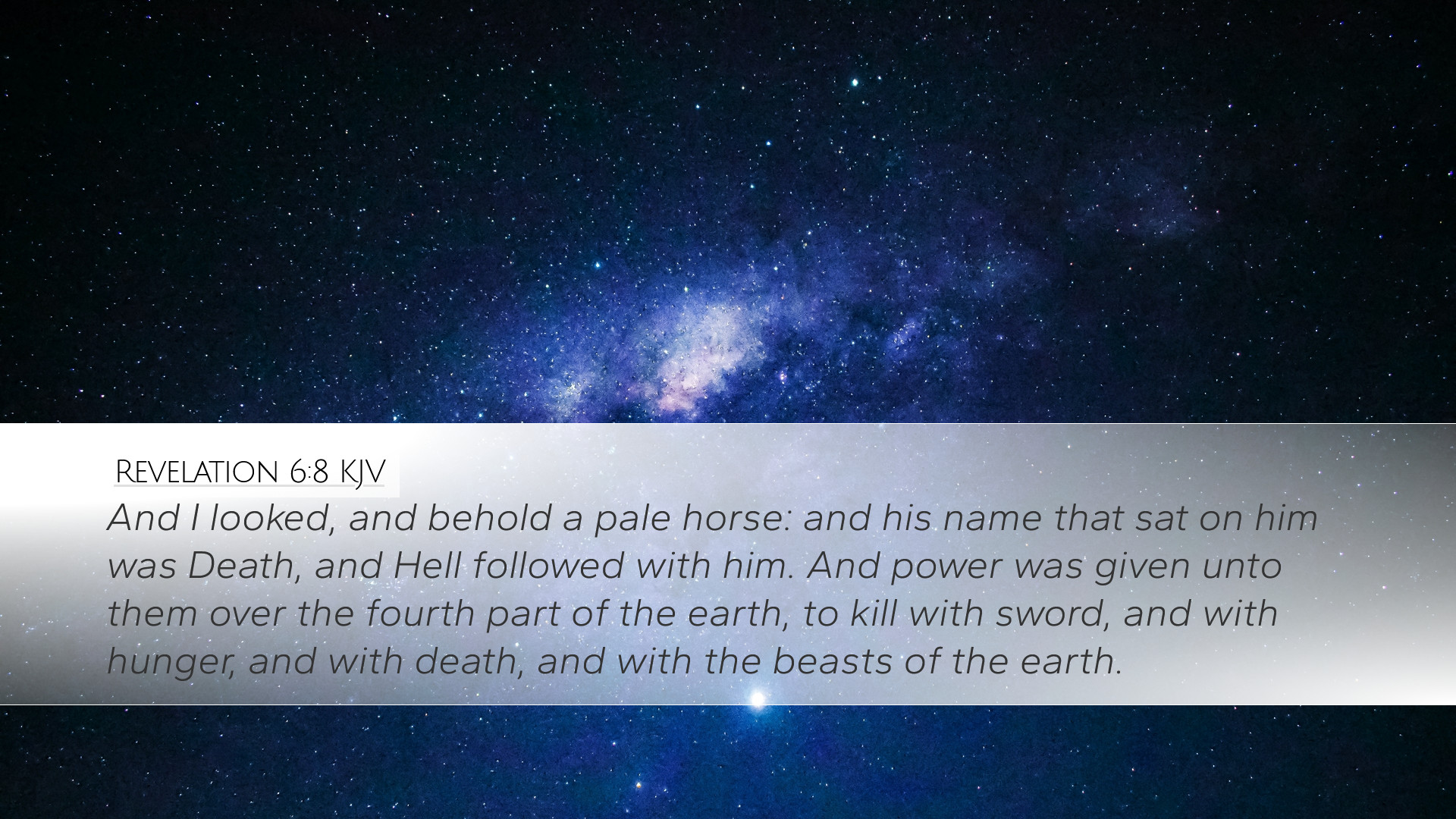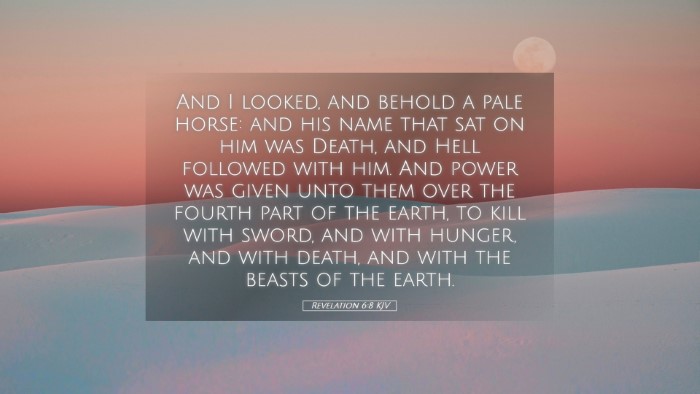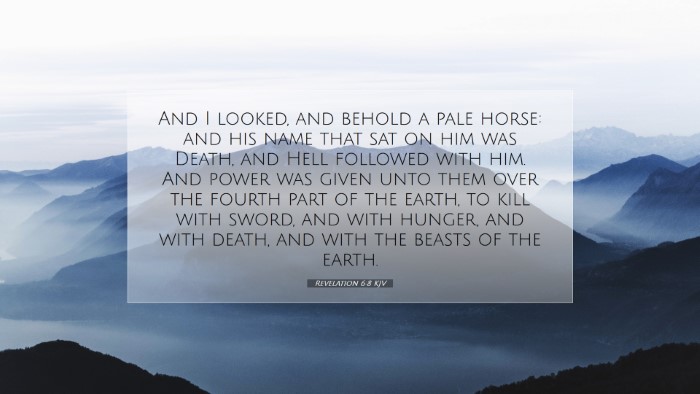Commentary on Revelation 6:8
Text of Revelation 6:8: "And I looked, and behold a pale horse: and his name that sat on him was Death, and Hell followed with him. And power was given unto them over the fourth part of the earth, to kill with sword, and with hunger, and with death, and with the beasts of the earth."
Introduction
This verse is part of the apocalyptic vision presented in the book of Revelation, particularly within the context of the opening of the seals. Here, the fourth seal reveals a pale horse, emblematic of death and its dominion. The imagery is rich and warrants thorough exploration for pastors, scholars, and students of the scripture.
Contextual Overview
The book of Revelation, authored by John, is a prophetic text that unveils future realities. This particular verse denotes significant themes around death, judgment, and the consequences of sin. It echoes the struggles faced by humanity across the ages and the ultimate sovereignty of divine justice.
Analysis of Key Components
The Pale Horse
The horse of pale color represents illness, death, and decay. Commentators like Matthew Henry note that the pale horse is "the color of death," symbolizing the fear and desolation accompanying the end times. The color indicates a fading, lifeless quality that speaks to the inevitable reality of mortality.
The Rider: Death
Death personified rides the pale horse, highlighting the theological truth that death is an entity with a significant role in God's plan for humanity. Adam Clarke points out that this rider signifies not just physical death but spiritual death, the ultimate separation from God. Life is frail and vulnerable, and the presence of Death emphasizes human helplessness in the face of sin's consequences.
Hell Follows After
The mention of Hell following Death infers a grim reality for those who have rejected God’s offer of grace. Albert Barnes suggests that this may symbolize the grave's power, capturing the idea that death is not a standalone event but leads to an eternal destiny. Hell, in this context, underlines the seriousness of eschatological themes presented throughout the scripture.
Power Over a Fourth Part of the Earth
Here, we see a restriction in the scope of destruction, as the text states that power was given over "the fourth part of the earth." This territory implies extensive yet limited authority. Matthew Henry notes that the specified fraction conveys both a sense of vastness in Death's reach and God's sovereignty in the limitations applied. This equilibrium reinforces the belief that God remains in control, even amidst chaos and judgment.
Instruments of Destruction
The text articulates four means of destruction: "sword, hunger, death, and beasts of the earth." Each instrument signifies varying forms of judgment:
- Sword: This symbolizes warfare and violence, indicative of humanity's conflict and hostility.
- Hunger: Represents famine and scarcity, pointing to divine judgment manifested through communities' neglect of God.
- Death: Beyond physical death, it emphasizes spiritual death and the severing of communion with God.
- Beasts of the earth: These can represent wild animals or symbolize chaos in the created order, further aligning with divine judgment.
Theological Implications
This verse exposes profound theological truths addressing the nature of sin, judgment, and redemption. The presence of Death and Hell serves as a reminder of ultimate realities confronting humanity:
- The Reality of Sin: The imagery underscores the catastrophic outcomes of a life disconnected from God, emphasizing man's propensity towards sin.
- Consequences of Rebellion: The doom associated with the pale horse illustrates the repercussions of rejecting divine authority.
- Grace and Redemption: While the depiction may seem dire, it simultaneously points believers to the hope found in Christ, who conquers death and offers eternal life.
Pastoral Applications
For pastors and leaders, this passage serves as a key teaching moment regarding the seriousness of sin and the necessity of calling people to repentance:
- Awakening Awareness: Mature congregations should be educated on the significance of eschatological themes and their impact on daily living.
- Encouragement to Evangelize: The urgency of the Gospel message is deepened by these verses, motivating outreach to share the hope of salvation.
- Assurance for Believers: Amidst of fears tied to death and destruction, the church must emphasize the eternal security believers have in Christ.
Conclusion
Revelation 6:8 stands as a sobering reminder of the realities of death and judgment. Yet, intertwined within this darkness is the hope and light that comes through Jesus Christ. Understanding the depth of these themes equips pastors, scholars, and students to engage thoughtfully with the text and apply its truths meaningfully to their lives and ministries.


